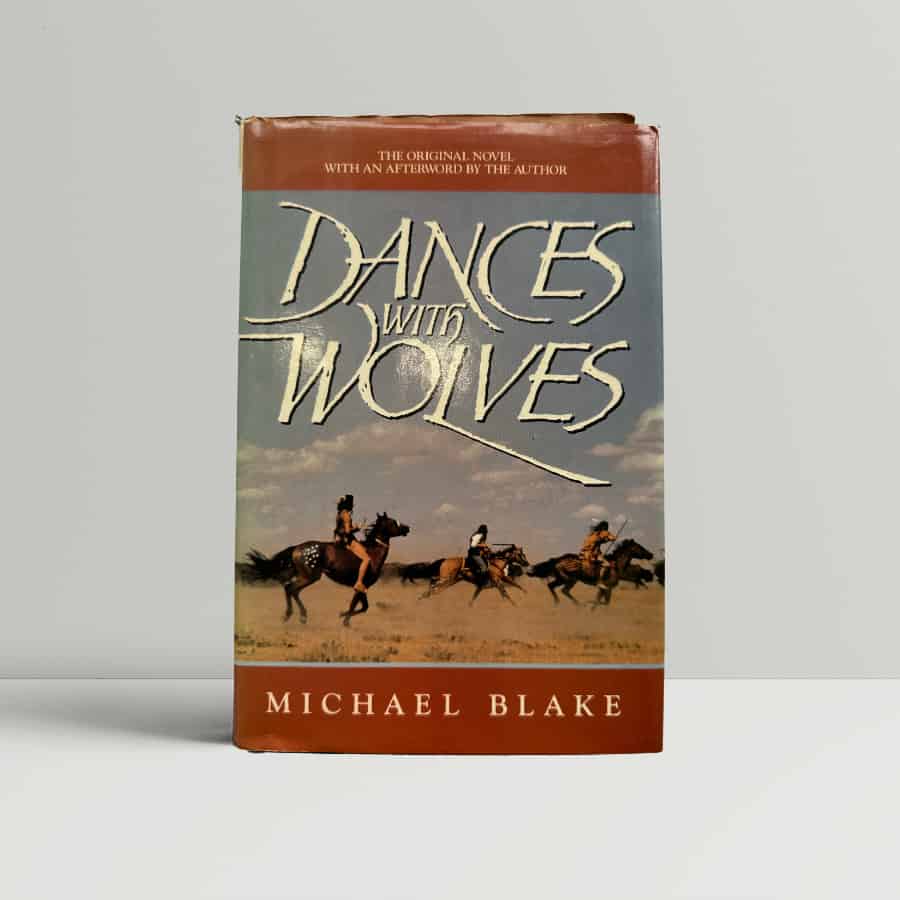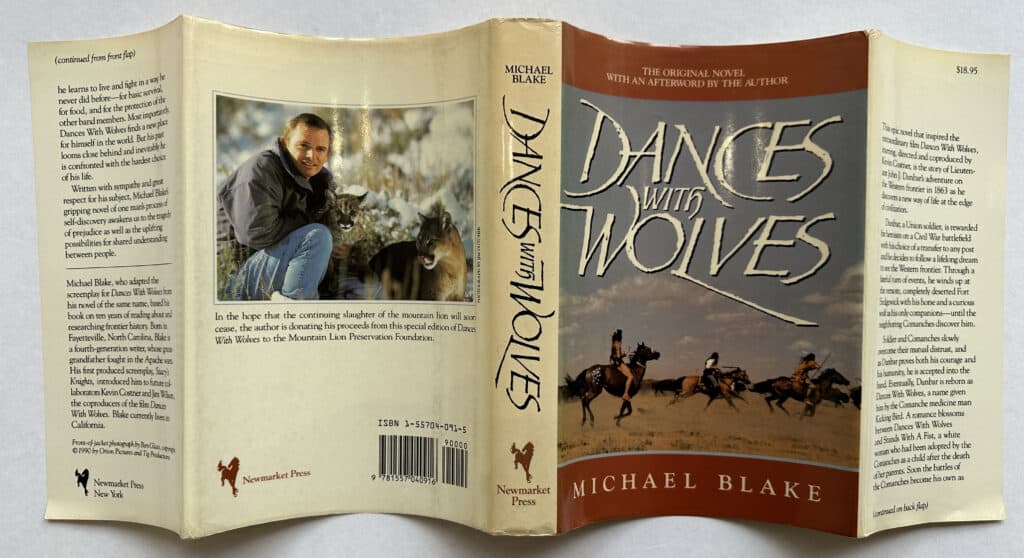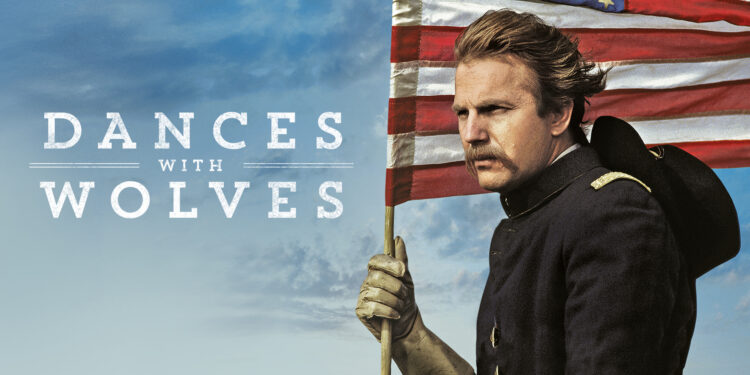Table of Contents
ToggleIntroduction
Dances With Wolves Summary By Michael Blake Published in 1988, Dances with Wolves is a critically acclaimed novel by Michael Blake, which centers on Lieutenant John Dunbar, a Union soldier who is sent to a remote outpost in the American frontier after the Civil War. The novel’s exploration of identity, cultural conflict, and the relationship between different peoples has made it a landmark work in American literature. Set in the 1860s, Dances with Wolves offers a nuanced portrayal of Native American life through the eyes of Dunbar, a man who, after becoming isolated and growing disillusioned with his own military mission, develops a deep connection with the Sioux tribe.
The novel’s title refers to Dunbar’s experiences with the Sioux tribe and his evolving relationship with them, particularly with a Sioux woman named Stands With a Fist. Through his growing attachment to their way of life and values, Dunbar ultimately earns the name “Dances with Wolves” from the tribe, symbolizing his transition from a soldier of the colonizing force to a beloved member of the Sioux people.
Blake’s novel, adapted into a highly successful film in 1990, brings forward themes of belonging, understanding, and respect between cultures, while also highlighting the brutal impact of colonization on indigenous peoples. Dances with Wolves is not just the story of one man’s transformation but a larger reflection on the way Native Americans were displaced and mistreated during the westward expansion of the United States.
Summary of Dances with Wolves by Michael Blake
Part I: Introduction to Dunbar’s Isolation
Dances with Wolves begins in 1863 when Lieutenant John Dunbar, a Union soldier, is assigned to a remote post called Fort Sedgewick on the western frontier. Dunbar had previously been injured during the Civil War and, after recovering, requested to be stationed in a remote outpost. His motives for choosing isolation are twofold: he wants to be away from the horrors of the war and the politics of military life, and he is drawn to the frontier, where he hopes to experience the wild, untouched world that many Americans fantasized about. Dances With Wolves Summary By Michael Blake
Upon arrival, Dunbar finds that the fort has been abandoned, and he is left alone to manage the post. Despite the solitude, Dunbar relishes the opportunity to observe nature, and he becomes increasingly fascinated with the surrounding wilderness. He spends much of his time recording his observations of the land and the animals, particularly wolves, which become a symbol for his transformation.
Read More
While isolated, Dunbar’s mental and physical state fluctuates. Initially, he struggles with loneliness and the monotony of his new life. However, his experiences with nature and the surrounding wildlife lead him to a gradual realization that there is much more to life than his previous military life had offered. He is increasingly disturbed by the fact that the army he once served is part of the larger project of westward expansion, which is displacing Native Americans and disrupting their way of life.
Part II: Meeting the Sioux Tribe
Dunbar’s life changes when he has a chance encounter with a Sioux warrior, whom he initially perceives as a threat. The warrior, whom Dunbar later learns is named Kicking Bird, does not immediately engage with him but watches from a distance. This moment marks the beginning of Dunbar’s deep and transformative connection with the Sioux tribe. Kicking Bird returns to the fort several times, bringing with him a few other tribe members, and the interactions begin to build a rapport between Dunbar and the tribe.
Dunbar’s transformation from a soldier of the American army to a sympathetic ally of the Sioux people is gradual. Over time, he learns their language, customs, and way of life, which contrasts sharply with the world he left behind. In his observations, Dunbar begins to see the Sioux as peaceful, connected to nature, and culturally rich—qualities that sharply contrast with the violent, imperialistic attitudes of the United States Army. Dunbar’s interactions with the Sioux are not just about learning survival skills or trading, but also about finding a new identity and purpose that is connected to respect and harmony with others, particularly the land. Dances With Wolves Summary By Michael Blake

Through his interactions with Kicking Bird, Dunbar becomes part of the Sioux community. Kicking Bird, a respected spiritual leader, teaches Dunbar to understand the Sioux worldview, including their beliefs about the earth, animals, and the interconnectedness of life. The bond between the two men deepens, and through Kicking Bird’s guidance, Dunbar becomes increasingly accepted by the tribe. Dances With Wolves Summary By Michael Blake
Part III: Dances with Wolves and His Role in the Sioux Tribe
Dunbar becomes known to the Sioux as “Dances with Wolves,” a name given to him because of his interactions with the wolf pack he has come to care for. This name symbolizes Dunbar’s immersion in Sioux life, as well as his departure from the identity he had previously known as a soldier. As “Dances with Wolves,” Dunbar becomes increasingly integrated into the tribe’s daily life. He helps them with various tasks, including defending the tribe against enemies and learning how to survive and thrive in the wilderness.
The Sioux tribe, initially suspicious of Dunbar, begins to accept him as one of their own, particularly after he assists them in a raid against enemy forces. Over time, Dunbar’s relationship with the tribe deepens, especially as he develops a romantic relationship with a Sioux woman named Stands With a Fist, who has suffered traumatic experiences after her family was killed by white settlers. Stands With a Fist becomes an important part of Dunbar’s life, and their bond further solidifies his connection to the Sioux. Dances With Wolves Summary By Michael Blake
Dunbar’s bond with the tribe is not just a romantic or personal one; it is a spiritual and emotional connection to their way of life. He becomes a member of the Sioux community in every sense, participating in their rituals, understanding their values, and ultimately embracing their fight against the encroaching forces of white settlers and the U.S. Army.
Read More
Part IV: The Conflict with the U.S. Army and the Collapse of the Sioux Way of Life
As Dunbar grows more integrated into Sioux life, the forces of colonization continue to push westward. The U.S. Army, which Dunbar had once been a part of, arrives in the region to clear the land and push the Sioux onto reservations. Dunbar’s position as a man caught between two worlds becomes increasingly difficult. While he has made his peace with the Sioux and has become an integral part of their society, he also knows that the U.S. military is coming to destroy everything he has come to love. Dances With Wolves Summary By Michael Blake
The final stages of Dances with Wolves depict the tragic consequences of the collision between the Sioux and the U.S. Army. Dunbar, now fully “Dances with Wolves,” must make difficult decisions about his loyalty and his future. As the U.S. Army launches a campaign to forcibly relocate Native Americans to reservations, Dunbar must navigate his loyalty to his adopted people and the brutal forces that are threatening to destroy their way of life.
The novel culminates in a tragic confrontation between the Sioux and the army, where Dunbar’s role as a bridge between two cultures becomes his greatest challenge. In the end, Dunbar is forced to leave the Sioux, choosing to live in exile rather than return to the world that once defined him. Dances With Wolves Summary By Michael Blake
Themes and Analysis of Dances with Wolves
1. The Conflict Between Cultures: One of the most prominent themes in Dances with Wolves is the tension between Native American cultures and the forces of colonization. The novel portrays the Sioux as a proud, noble people whose way of life is threatened by external forces. Through Dunbar’s transformation, Blake emphasizes the value of understanding and mutual respect between different cultures, showing how individuals can learn from one another when given the opportunity.
2. Identity and Transformation: Dunbar’s journey is one of self-discovery and transformation. The novel explores the ways in which identity is shaped by culture, experience, and the choices individuals make. Dunbar begins as a soldier with rigid ideas of duty and honor but evolves into a man who rejects the colonial ideals of his former life and embraces a new, more harmonious existence with the Sioux. His journey represents the broader possibility of personal reinvention and the power of empathy.
3. Nature and the Wild: Another key theme in Dances with Wolves is the relationship between humans and the natural world. Dunbar’s connection with the wilderness and the wolves symbolizes his growing respect for the natural world, which is central to the Sioux worldview. Blake uses nature not only as a backdrop but as an active force in Dunbar’s emotional and spiritual development.

4. The Cost of Progress: The novel critiques the idea of “progress” as it was understood during the westward expansion of the United States. While the settlers and the U.S. Army believed they were bringing civilization and order to the frontier, their actions caused the displacement and destruction of Native American cultures. Dunbar’s decision to live with the Sioux reflects a critique of the colonial mindset that justified the conquest and subjugation of indigenous peoples. Dances With Wolves Summary By Michael Blake
Read More
FAQ
Q: Why is the novel titled Dances with Wolves?
A: The title reflects the transformation of Lieutenant John Dunbar into someone who is at one with nature. Dunbar earns the name “Dances with Wolves” from the Sioux tribe, symbolizing his growing bond with the natural world and his integration into Sioux life.
Q: Is the novel historically accurate?
A: While Dances with Wolves is a work of fiction, it draws upon historical events and the real experiences of Native Americans during the westward expansion. The novel provides a historically grounded depiction of the Sioux people, their culture, and the impact of U.S. military policies on indigenous populations.
Q: What does Dunbar’s relationship with the wolves symbolize?
A: The wolves in the novel represent freedom, nature, and the harmony between humans and the environment. Dunbar’s connection with them symbolizes his escape from the destructive forces of imperialism and his embrace of a way of life that respects the natural world.
Q: How does the novel portray Native American culture?
A: The novel portrays Native American culture in a respectful, nuanced light, emphasizing the Sioux’s deep connection to the land, their spiritual practices, and their values of community and honor. Through Dunbar’s eyes, we see a culture that is peaceful, deeply connected to nature, and in stark contrast to the violence and exploitation of the settler forces.
Q: What happens to Dunbar at the end of the novel?
A: At the novel’s conclusion, Dunbar is forced to leave the Sioux tribe because of the encroachment of the U.S. military. He chooses exile over returning to the army, and the Sioux are ultimately displaced. Dunbar’s journey ends with his recognition that the world he had come to love is being destroyed, but his bond with the Sioux people endures in spirit. Dances With Wolves Summary By Michael Blake
Read More

















